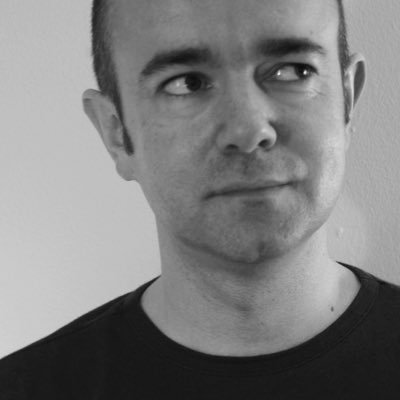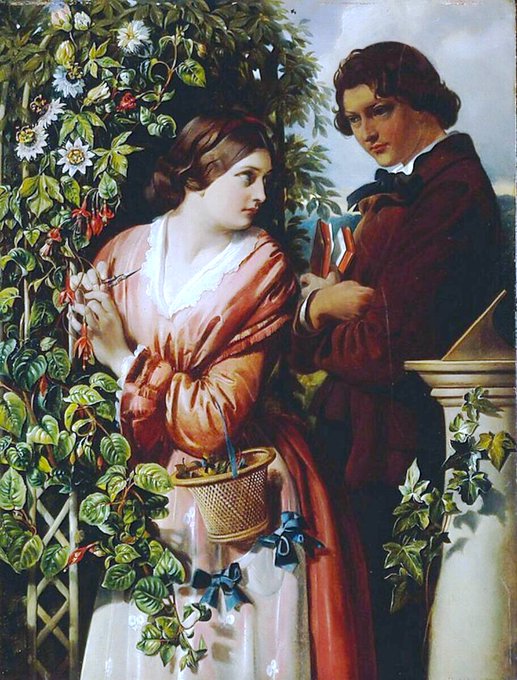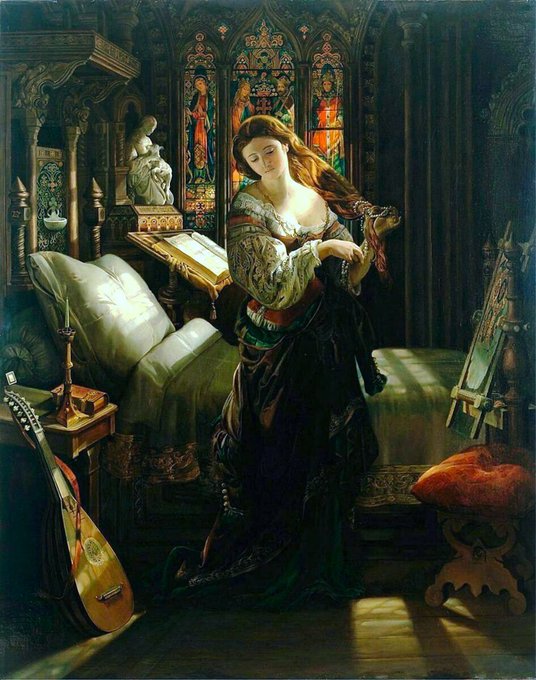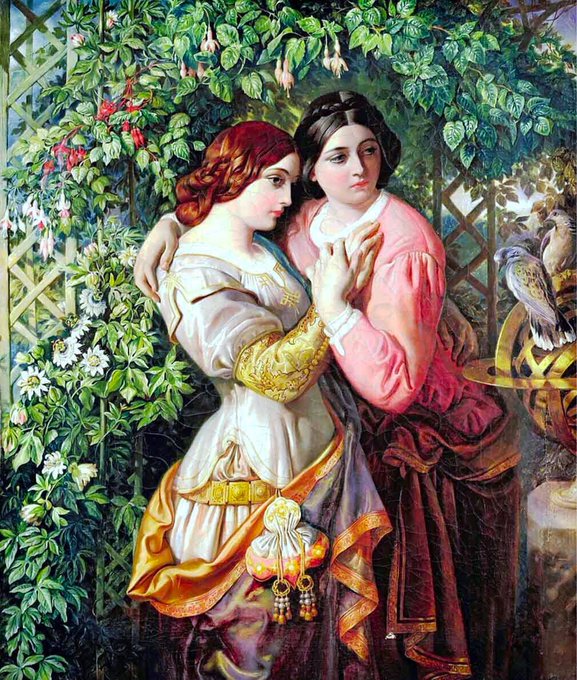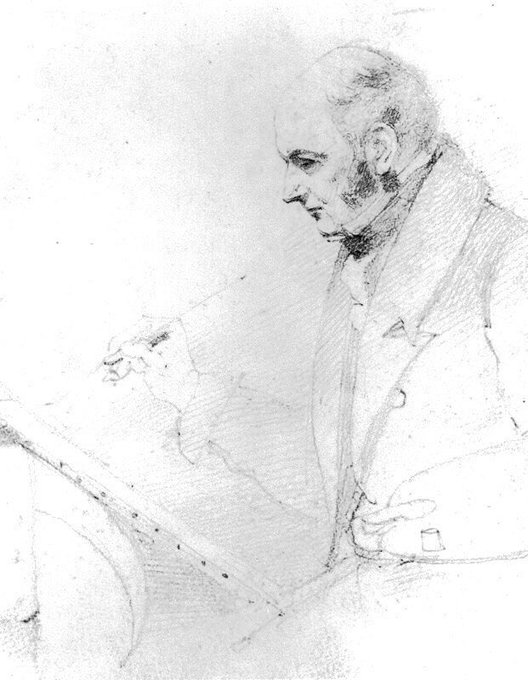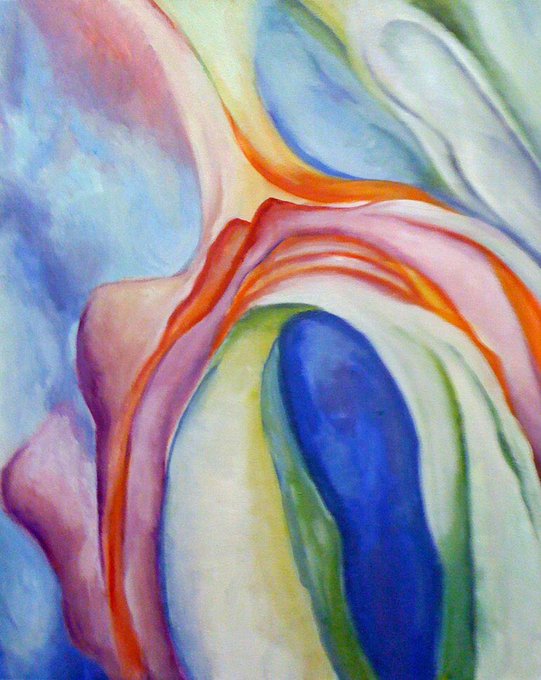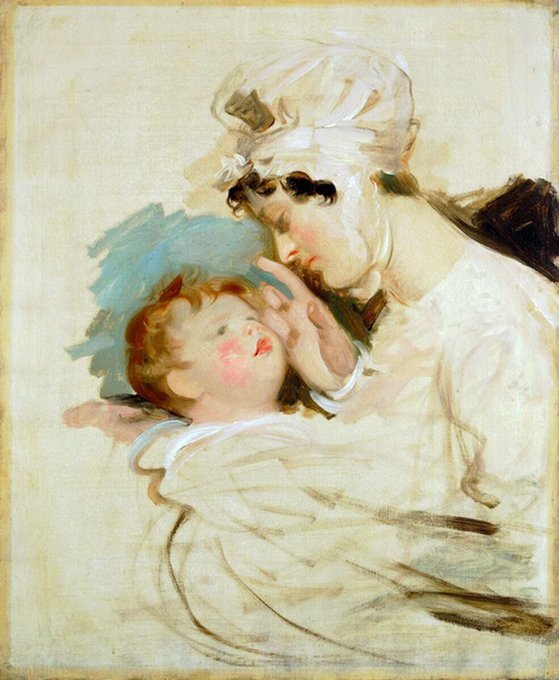Maclise was a master of Victorian charm, indeed he was a friend of Prince Albert. The Student (1862), A Bower with Passion Flowers (1865), A Winter Night’s Tale (c1867) & Madeleine after Prayer (1868)
In 1858 he painted Wellington & Blücher & followed that with the Death of Nelson (1859-64). Not only could he sell the paintings but they also provided him with prints which were a lucrative addition at the time.
Where Maclise differs from his contemporaries is his bright colours, his focus on narrative & an interest in Celtic & Gaelic legends. Waterfall at St Nighton’s Kieve, near Tintagel (1842), A Scene from Undine (1843) & Rosalind & Cecilia (1845)
He was a serviceable artist when it came to portraits at first. His depiction of famous people has ensured the survival of many of his portrait paintings. John Forster (1830), William Maginn (1830), John Constable (c1831) & William Ainsworth (c1834)
The Irishman left for London in 1827 & entered the RA School in 1828. He exhibited at the RA in 1829. By the 1830s his work was gathering attention. First Steps (1829), Self-Portrait (1829) & Dionysius Lardner (1830s)
Thread: Benjamin West (1738-1820) was an important American painter of history who achieved considerable success in England. His work is no longer fashionable due to its melodramatic & grandiose manner. Let’s take a look at an artist who died on this day...
Thread: Georgia O’Keeffe (1887-1986) died on this day. The Irish-American painter has been described as the mother of American modernism. Radiator Building - Night, New York (1927), Red Hills & White Shell (1938) & Music Pink & Blue II (1918)
Thread: Giovanni Battista Tiepolo (1696-1770) was the greatest Italian Rococo Artist. He is perhaps best known for his decorative & stellar church paintings that still amaze today. His was a world of aerial gods & divine saints. Today is his birthday
In 1827 he exhibited his Red Boy (William Lambton) to great acclaim. Countess of Darnley (c1825-30), Lady Caroline Lamb (1827), A Baby (nd) & Mother & Child (?1810). Many of his portraits were unfinished at the time of his death & show his working technique
These works explore the painter’s interest in the male form. Zahrtmann was living during a period of extreme intolerance & had had friends suffer from state persecution during his 20s simply for being gay. Nero (1902), An Etruscan (1908) & Prometheus (1906)
